| |
|
07.
 | Al Jazeera "Bas-relief" sculpture sequence
| Al Jazeera "Bas-relief" sculpture sequence |
| |

'' With Al Jazeera, mounir fatmi intends to dismantle the ideological and technological promises made by images on the internet. ''
Claudio Álvarez, El Pais, March 2021
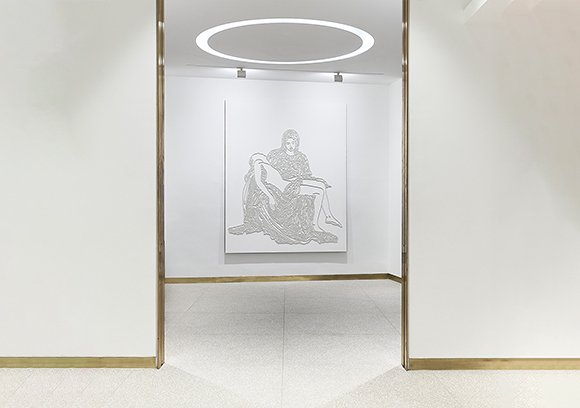
La Pieta
Exhibition view from If you don't know me by now, Ceysson & Bénétière, 2024, Lyon.
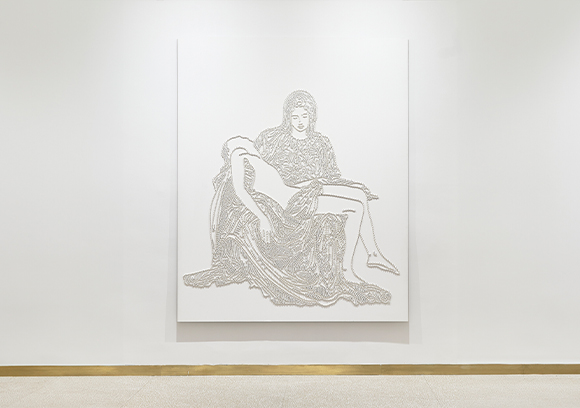
La Pieta
Exhibition view from If you don't know me by now, Ceysson & Bénétière, 2024, Lyon.
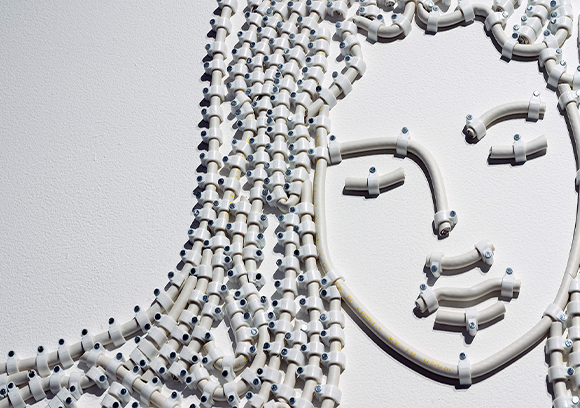
La Pieta
Exhibition view from If you don't know me by now, Ceysson & Bénétière, 2024, Lyon.
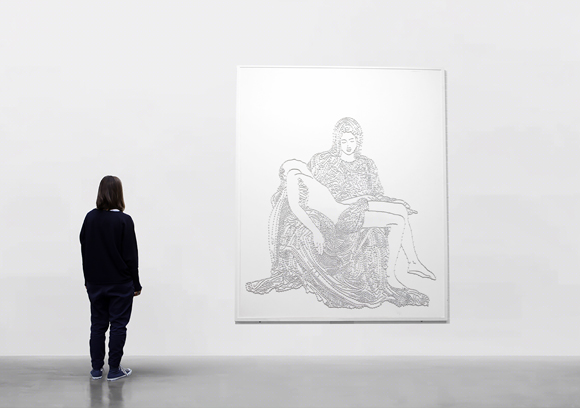
La Pieta
Exhibition view from #Cometogether, Edge of Arabia, 2012, London.
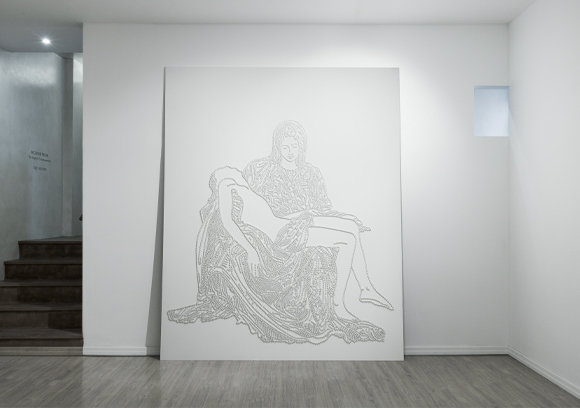
La Pieta
Exhibition view from #Cometogether, Edge of Arabia, 2012, London.
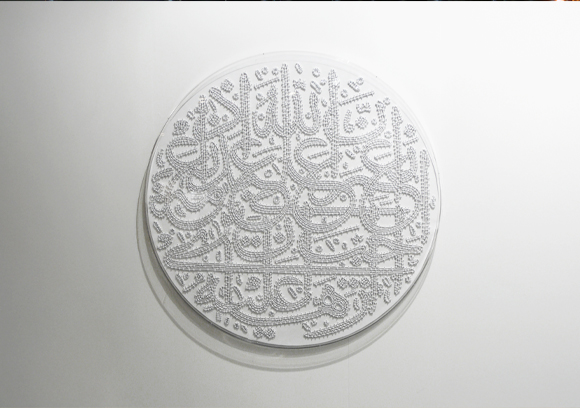
The Machinery
Exhibition view from Art Brussels, Conrads Gallery, 2010, Brussels.

People know, people don't know
Exhibition view from Jusqu'au bout de la poussière, Espace des arts, 2004, Colomiers.
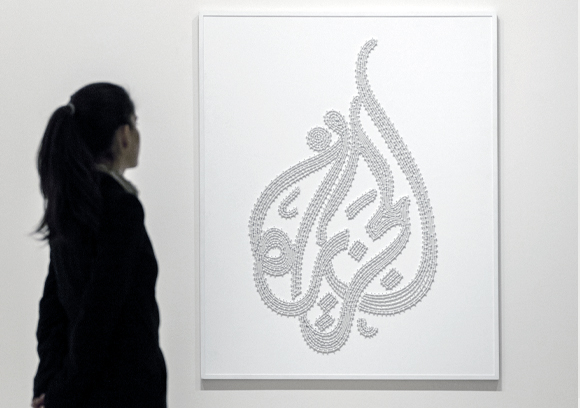
Al Jazeera
xhibition view from Looking at the World Around You, Santander Art Gallery, 2016, Madrid.
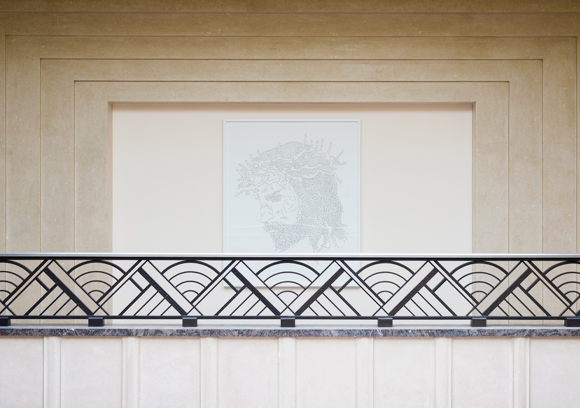
Presumed Innocent
Exhibition view from Icons, Fondation Boghossian, 2021, Brussels.
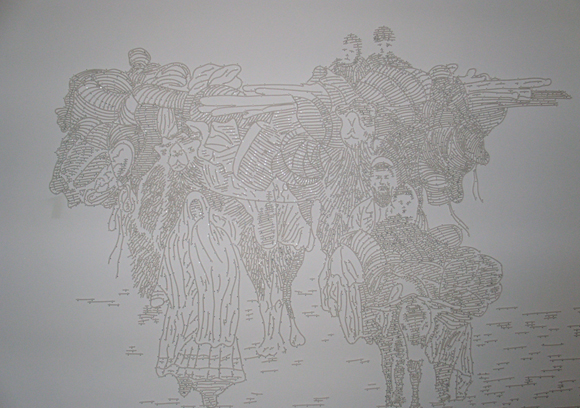
Kabul
Exhibition view from Comprendra bien qui comprendra le dernier, CAC Le Parvis, 2004, Ibos.
|
|
2004-2007. Coaxial antenna cable on wood panel, staples, 160 x 130 cm.
Collection of Mathaf Museum of Modern Art, Doha.
Courtesy of the artist and Ceysson & Bénétière, Paris.
Ed. of 5 + 1 A.P.
|
|
|
| Collection of Mathaf, Arab Museum of Modern Art, Doha
Collection of Farjam Foundation, Saudi Arabia
Collection of Navarra, France
La sculpture « Al Jazeera » reproduit le logo du réseau de télévision par satellite du Qatar, composition calligraphique en arabe classique, dont le sens est « île » et dont la forme évoque une flamme. Elle est réalisée au moyen de câbles coaxiaux à gaine blanche - outil de transmission de l'image et des informations principalement utilisé jusqu'à la fin des années 90, et matériau récurrent des œuvres de mounir fatmi. La chaîne Al JAzeera, lancée en 1996 et revendiquant 20 ans plus tard plus de 25 millions de spectateurs au Moyen-Orient et en Afrique du Nord s'est imposée comme un des premiers grand média arabe avec une influence internationale et son apparition dans l'univers des médias a été largement commentée. La ligne éditoriale de la chaîne et ses reportages au point de vue parfois différents des grands médias concurrents livrent aux spectateurs une autre vision de la politique internationale, suscitant ainsi des débats.
L'œuvre questionne la place de la communication et de la médiatisation dans nos sociétés contemporaines et tente de définir le rapport de l'art contemporain aux images et à leur pouvoir. Elle s'inspire notamment de notions philosophiques développées par Guy Debord, des conceptions linguistiques de Wittgenstein sur la production des significations, et de courants artistiques, tels que le pop art et le minimalisme. « Al JAzeera » croise les techniques de l'audiovisuel et de l'art sculptural. L'œuvre joue avec les ombres portées qui révèlent la présence et la répartition des câbles, font naître et disparaître les formes et donnent l'impression que l'œuvre se modifie sans cesse sous nos yeux. La sculpture met en série ses éléments les uns à la suite des autres, qui à leur tour forment un ensemble de plans se déroulant en séquence. Elle a également pour modèle le dispositif iconique du bas-relief et met ainsi en parallèle les pouvoirs religieux et médiatiques. Le logo de la chaîne de télévision se voit transformé en symbole religieux et les systèmes de productions d'informations que constituent les médias sont assimilés à une religion, comme ce qui relie les individus entre eux au sens étymologique, ou comme ce qui exerce éventuellement une forme de domination sur eux.
L'analyse du pouvoir médiatique dans « Al JAzeera » relève d'une dé-construction multipliant les angles d'approche et les plans esthétiques, mêlant abstrait et figuratif, symbolisme et matiérisme, envisageant le phénomène sous ses aspects géométriques et physiques, conceptuels et sensibles. Le dynamisme de sa composition rend compte du flux de l'information et d'un système de régulation complexe, fait de nombreux éléments ayant chacun une place et une fonction précise. Le motif blanc sur fond blanc de l'œuvre, s'il est familier du grand public des pays arabes et facilement reconnaissable par ceux-ci, ne se laisse pourtant pas aisément voir et met à l'épreuve les capacités cognitives du spectateur. L'indistinction qui y règne offre un espace de projection mentale à ce dernier, ou l'entraîne dans un séduisant et dangereux vertige visuel. Elle se prolonge avec l'incrustation du bas-relief dans les murs de la galerie d'exposition qui signale le lien des systèmes de production de l'information avec l'architecture et son pouvoir de donner forme à la réalité en informant.
La sculpture « Al Jazeera » tend à la fois à capter et à égarer le regard et nécessite un effort de la part de celui qui la contemple. Elle incite le spectateur à ne pas se laisser à la passivité, à observer une distance critique avec les pouvoirs des images, et à prendre conscience de la manière dont elles participent à créer la réalité qui nous entourent.
Studio Fatmi, Janvier 2018.
|
|
The sculpture « Al Jazeera » reproduces the logo of the Qatari satellite news channel, a calligraphic composition in classical Arabic meaning « island », and whose shape is evocative of a flame. It is created using white coaxial cables – a material for the transmission of images and information used until the late 1990s and a recurrent medium in mounir fatmi’s work. Al Jazeera, launched in 1996 and claiming 20 years later to have over 25 million viewers in the Middle East and North Africa, has established itself as one of the largest Arab media outlets. Its influence is global, and its emergence in the world of international media was widely commented upon. The channel’s editorial policy and its news reports with their points of view that are sometimes different to those of its main competitors offer viewers another vision of international politics, which often creates debates.
The work questions the place of communication and media exposure in today’s societies and tries to define the relation of contemporary art to images and their power. It is inspired in part by the philosophical notions developed by Guy Debord, Wittgenstein’s linguistic concepts on the production of significations and by artistic movements such as Pop Art and Minimalism. « Al Jazeera » combines the techniques of audiovisual technologies and sculptural art. The piece plays with the projected shadows revealing the presence and distribution of the cables and that create shapes and make them disappear, giving the impression that the work is constantly changing before our eyes. The sculpture lines up its elements one after the other, and they in turn create a series of shots that are shown sequentially. It also has for a model the iconic medium that is the bas-relief and thus creates a comparison between the powers of religion and of the media. The TV channel’s logo is turned into a religious symbol and the information-producing apparatus that is the media is assimilated to a religion, in the etymological sense of something that connects individuals, or as something that potentially exercises a form of domination over them.?
The analysis of the power of the media carried out in « Al Jazeera » is akin to a work of deconstruction with multiple points of view and esthetic approaches, combining abstraction and figurativeness, symbolism and matterism, examining the phenomenon under its geometric, physical, conceptual and sensitive aspects. The dynamism of its composition reproduces the flow of information and of a complex regulation system comprising numerous elements that all have a precise place and function. The work’s white motif on a white background, familiar and easily recognizable to Arab audiences, isn’t easy to perceive and challenges the viewers’ cognitive capacities. This indistinctiveness provides them with a space for mental projections, or lures them into a seductive and dangerous visual vertigo. It is prolonged with the embedding of the bas-relief into the walls of the exhibition gallery, which demonstrates the connection between information producing systems and architecture and their capacity to shape reality through information. The sculpture « Al Jazeera » tends to both capture and misdirect the viewers’ gaze and requires an effort on their part. It encourages viewers not to indulge in passivity, to maintain a critical distance vis-à-vis the power of images and to become aware of the way they participate in creating the reality surrounding us.
Studio Fatmi, January 2018. |
|
|
|